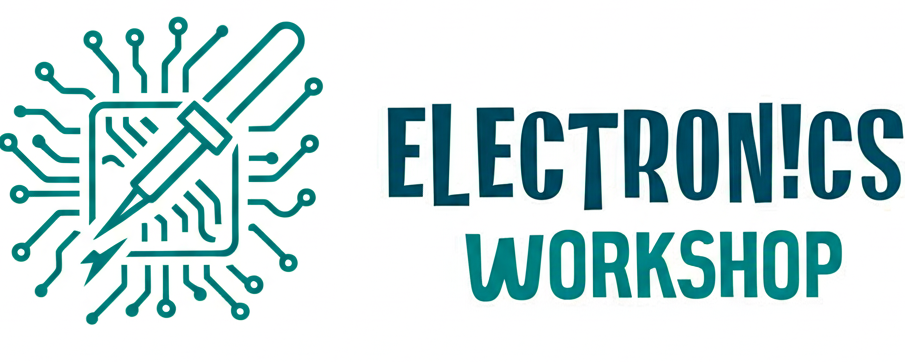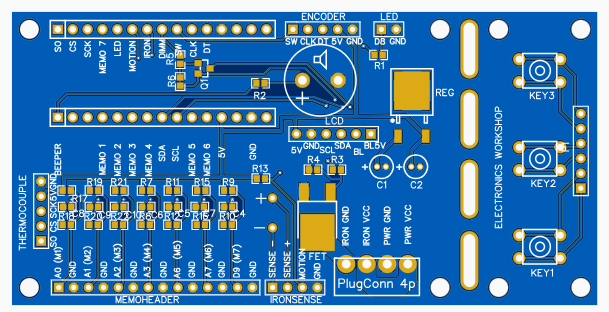Introduction
Floods are one of the most devastating natural disasters, causing immense damage to life and property worldwide. Early detection and timely warnings play a crucial role in reducing risks and saving lives. This project, Flood Detection and Warning System using LoRa, leverages IoT technology, Arduino Nano, and LoRa communication to create a low-power, long-range, and reliable flood monitoring solution.
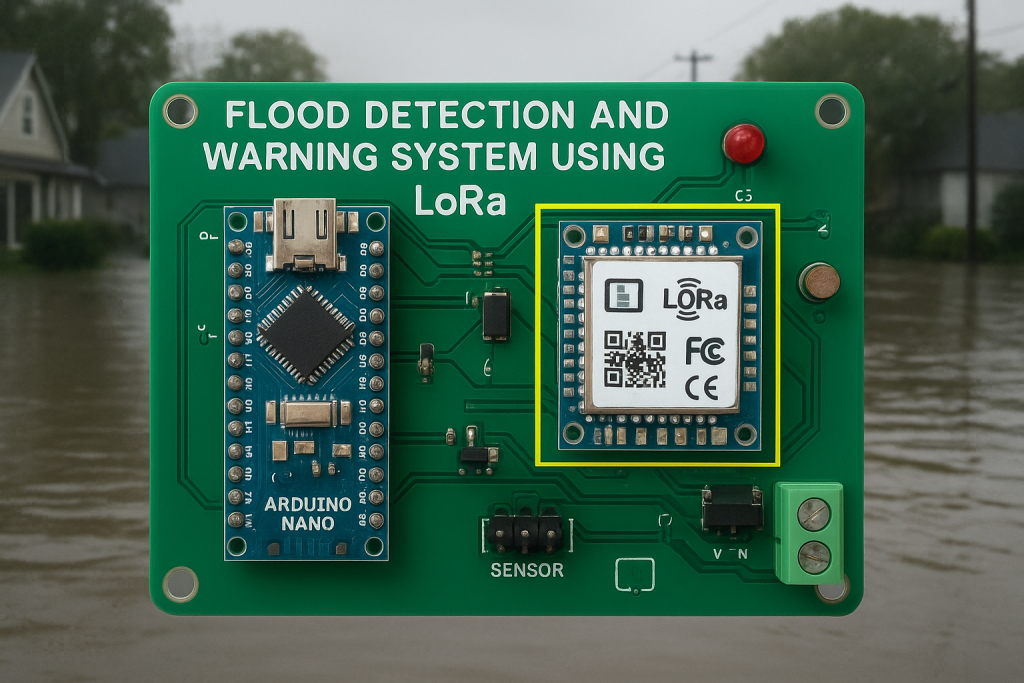
Objectives
- Detect rising water levels in flood-prone areas.
- Transmit real-time alerts to a remote monitoring station using LoRa.
- Provide a cost-effective, scalable, and energy-efficient flood warning system.
PCB Manufacturer
PCBWAY is a highly skilled company specializing in PCB manufacturing. They offer their services at incredibly low prices, such as providing 10 PCBs for only $5. Additionally, new members receive a $5 bonus. The website allows customers to upload their Gerber Files and place orders.

PCBWAY is known for producing PCBs of exceptional quality and maintaining high standards, which is why many people trust them for their PCB and PCBA needs.
Below are some of my PCB’S manufactured by PCBWAY and I am fully satisfied by their Quality of service they provide
System Overview
The system consists of:
- Arduino Nano – Acts as the central microcontroller, reading sensor signals and controlling the LoRa module.
- Water Level Sensor – detects water level rise and sends signals to the Arduino.
- LoRa1280F27-TCXO Module (U1) – Used for long-range wireless communication.
- Connectors/Headers (P1, JP1, etc.) – Allow interfacing with external sensors (like water level sensor) and other components.
- Power Supply Lines (+5V, GND) – Supply regulated power to Arduino and LoRa module.
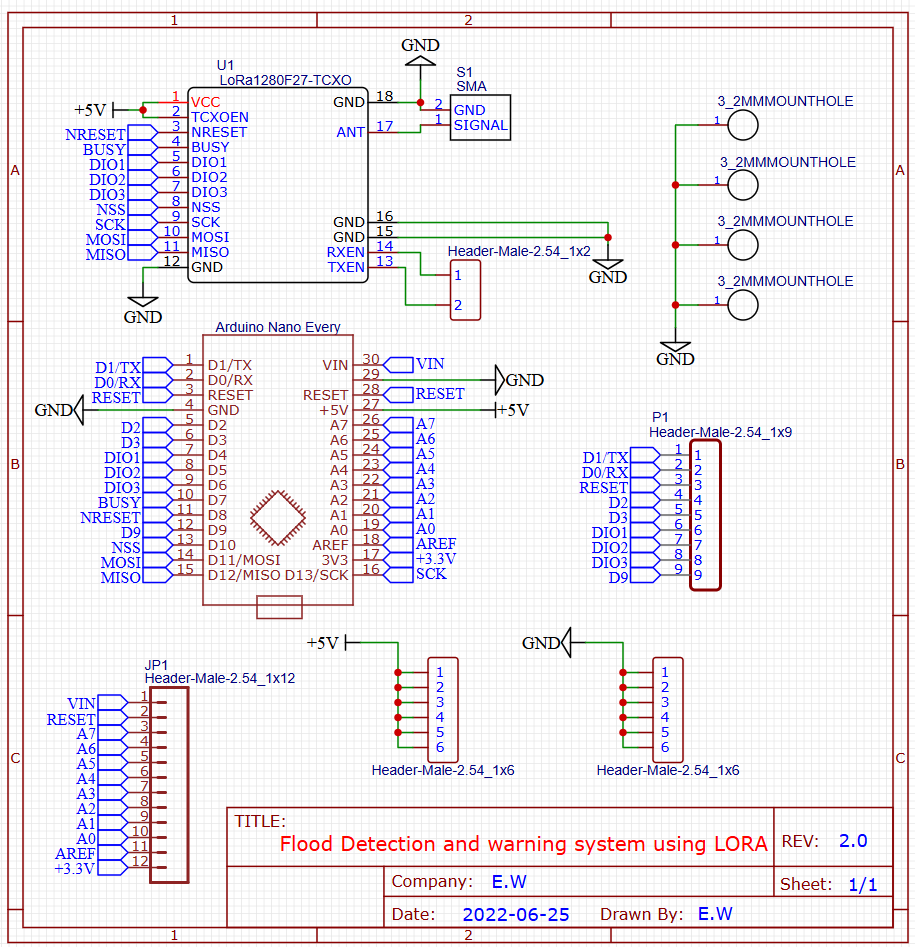
Arduino Nano Section
- Pins D10, D11, D12, D13 are connected to the LoRa module SPI interface:
- D10 → NSS (Chip Select)
- D11 → MOSI
- D12 → MISO
- D13 → SCK
- Reset & Ground lines are provided for system stability.
- Other pins (D2–D9, A0–A7) are available via headers (JP1, P1) to connect sensors or alert devices (like buzzers, LEDs).
LoRa Module Section (U1)
- Power Supply:
- VCC (Pin 2) → +5V supply
- GND (Pins 10 & 18) → Ground
- SPI Communication with Arduino Nano:
- NSS (Pin 9) ↔ Arduino D10
- MOSI (Pin 11) ↔ Arduino D11
- MISO (Pin 12) ↔ Arduino D12
- SCK (Pin 13) ↔ Arduino D13
- Additional Control Pins:
- RESET, BUSY, DIO0–DIO3 are available for advanced communication and interrupts.
- RXEN/TXEN used to switch LoRa module modes (receive/transmit).
- Antenna Connection:
- SMA connector (S1) provides RF signal to the antenna for wireless communication.
Working Principle
- A flood sensor (not explicitly shown in this schematic, but can be connected via JP1 or P1) measures water level.
- The Arduino Nano reads this data.
- If the water level crosses a set threshold, Arduino sends a warning signal via LoRa module (U1).
- The signal is transmitted wirelessly (through SMA antenna) to a receiver station with another LoRa module.
- Receiver processes the data and triggers alerts (buzzer, SMS, display, etc.).
Manufacturing Files
PCB Files
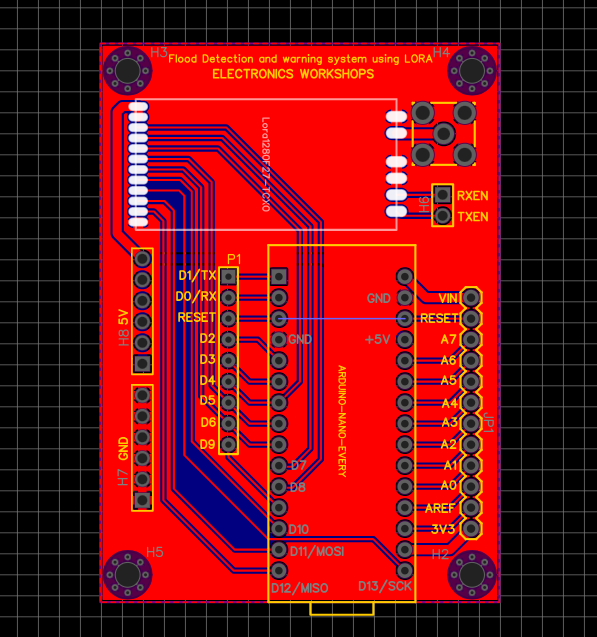
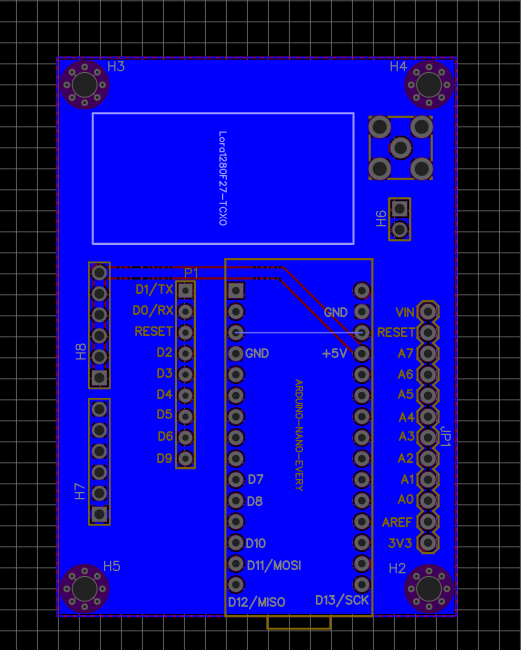
3D Files
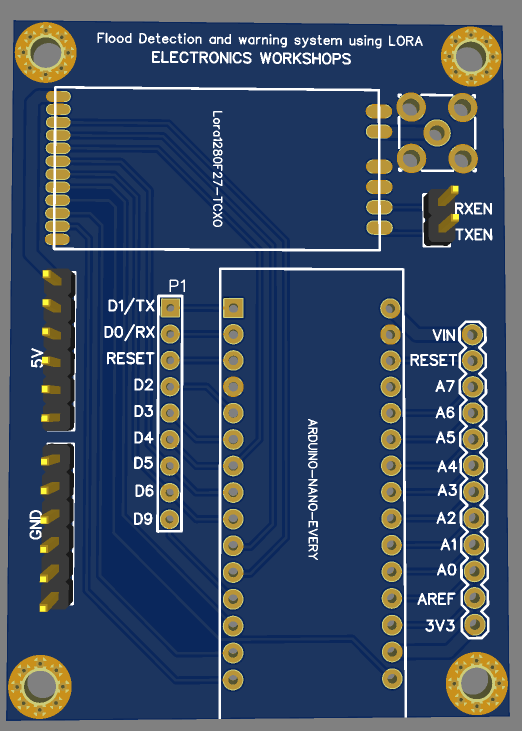
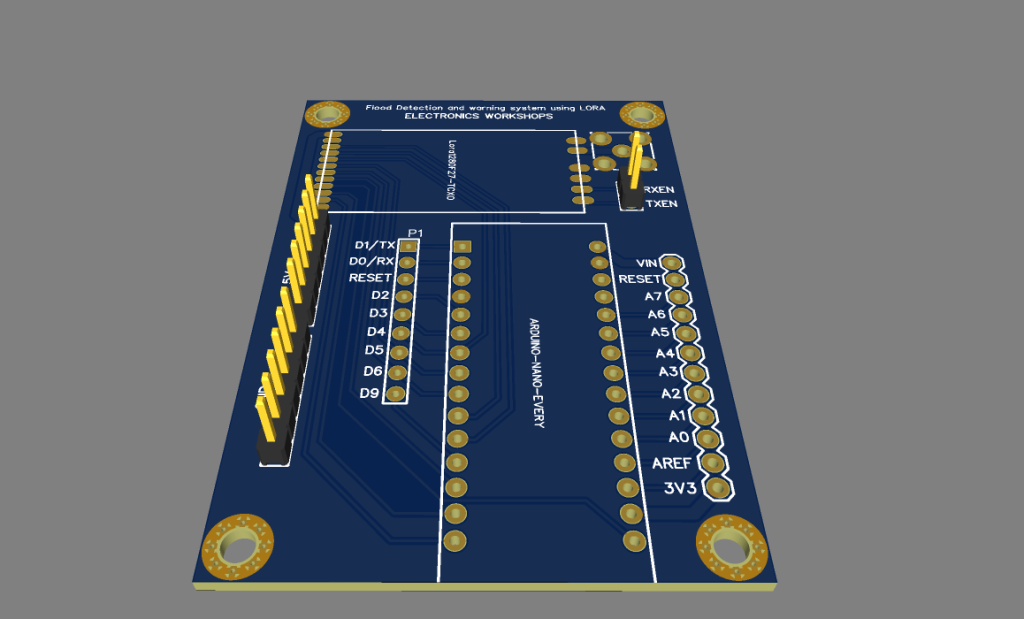
Gerber
Bill Of Materials
Position Files
Order Directly from PCB WAY
I have already uploaded all these required manufacturing files in PCBWAY website. You can easily go to the below link and place you order, and get your Own Home Automation PCB manufactured from one of the best pcb manufacturer PCBWAY
Applications
- Flood-prone rural areas and riverbanks.
- Dam or reservoir water monitoring.
- Urban stormwater drainage systems.
- Remote warning system for villages with no GSM network.
Advantages
- Long communication range without the need for internet or GSM.
- Low power consumption for continuous operation.
- Cost-effective and scalable for multiple monitoring stations.
- Early warning reduces casualties and property damage.
Future Enhancements
- Integration with IoT cloud platforms for live dashboards.
- SMS/WhatsApp/email alert system using a GSM backup module.
- Solar-powered nodes for remote and off-grid areas.
- Machine learning models to predict flood risks using historical data.
Conclusion
The Flood Detection and Warning System using LoRa provides a practical, efficient, and affordable solution for early flood detection. By combining Arduino Nano, LoRa communication, and simple water level sensors, this project demonstrates how technology can be harnessed to prevent disasters and save lives.
